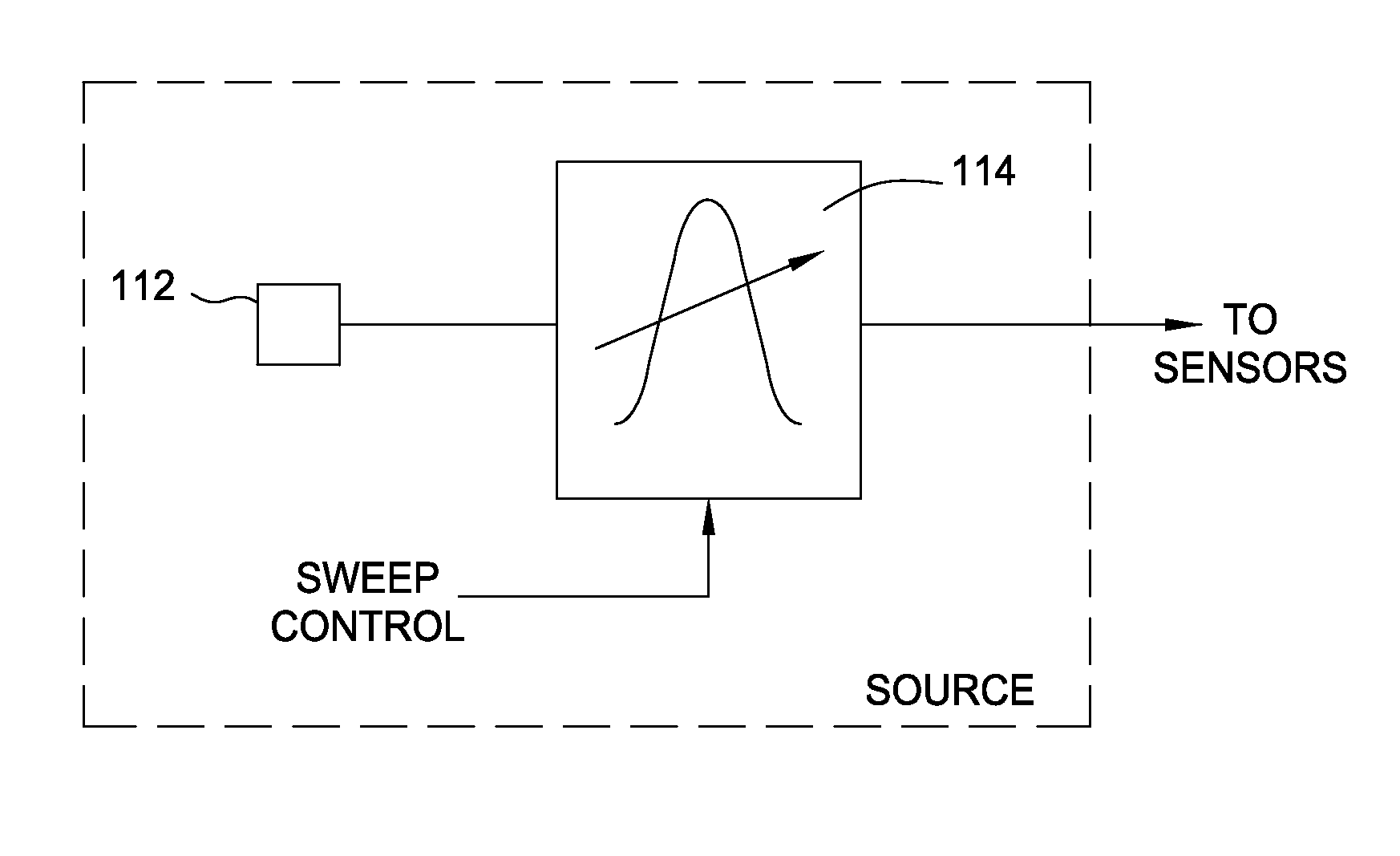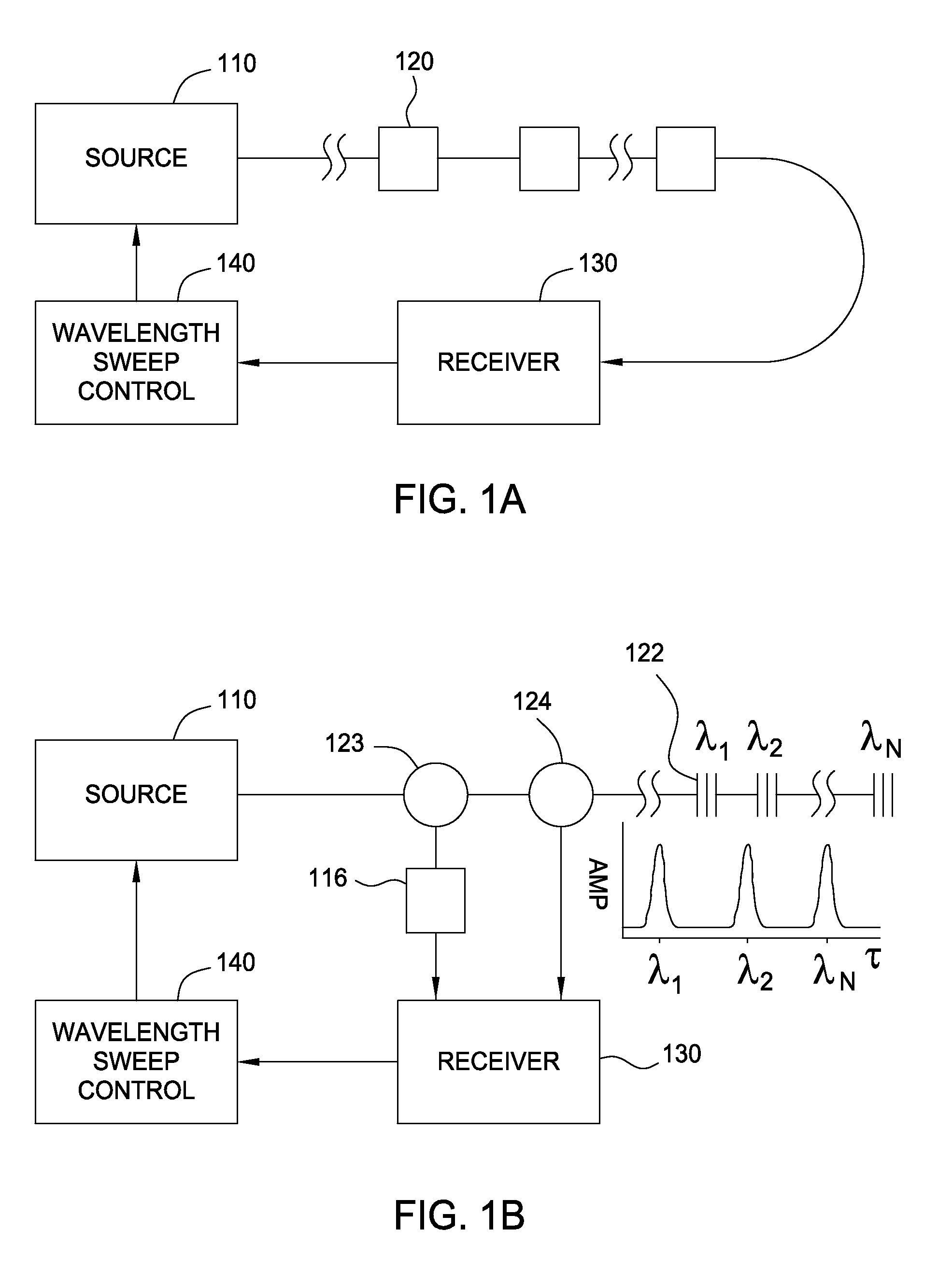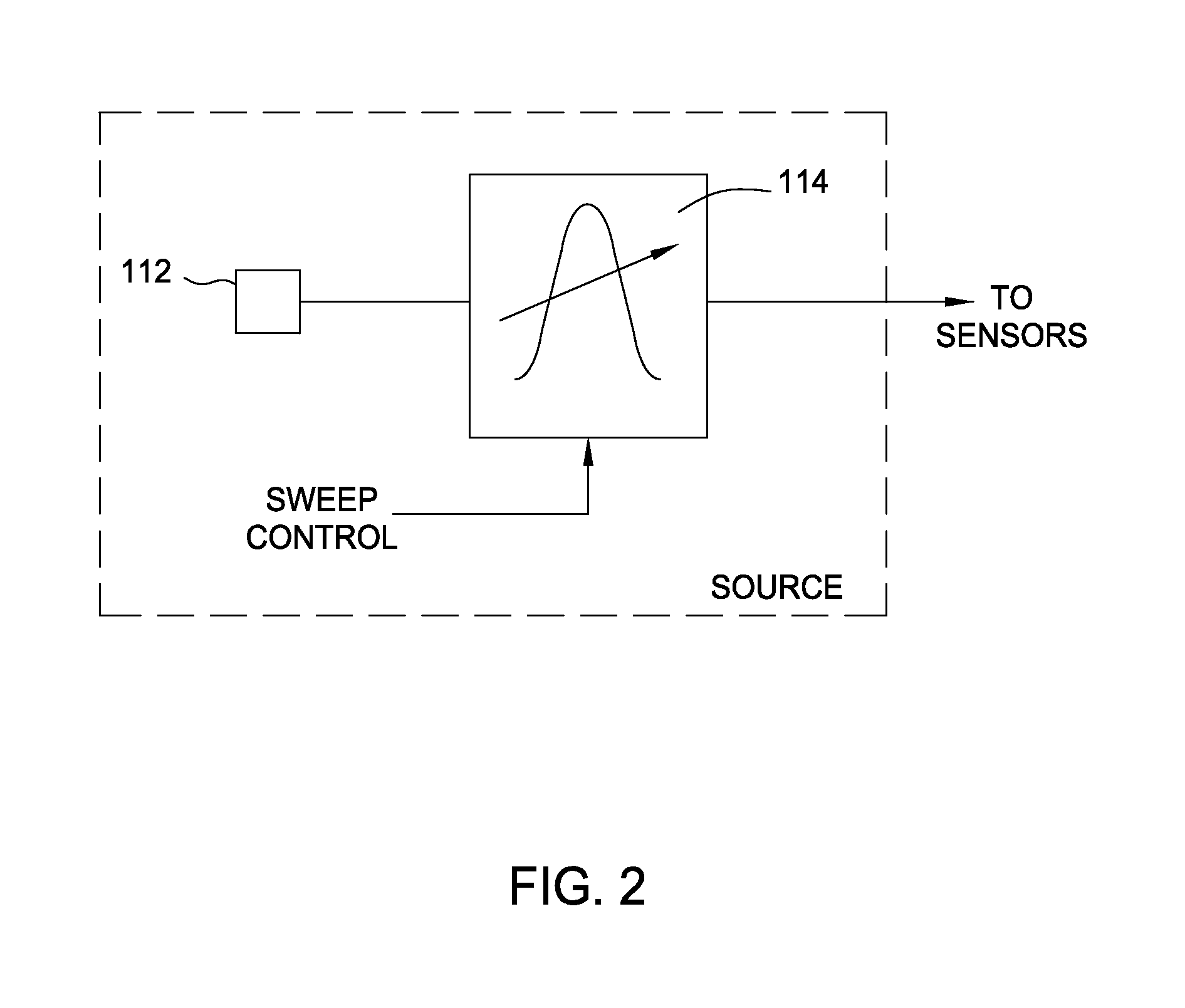Time division multiplexing (TDM) and wavelength division multiplexing (WDM) sensor arrays
a sensor array and time division multiplexing technology, applied in the field of optical component interrogation, can solve the problems of limited number of conventional swept-wavelength bragg grating interrogators, limited wavelength resolution, and limited spatial window range of swept-wavelength interferometry techniques, so as to avoid overlapping reflections
- Summary
- Abstract
- Description
- Claims
- Application Information
AI Technical Summary
Benefits of technology
Problems solved by technology
Method used
Image
Examples
example fast swept interrogation
[0034]Wavelength division multiplexing (WDM) systems are typically limited in the number of sensors that can be interrogated on a single fiber. However, using a fast-sweep tunable optical source may increase the number of sensors than can be combined on the fiber, thereby allowing distinguishing among signals from the sensors based on the timing of the received signals and the sweep and, thus, effectively providing for both WDM and time division multiplexing (TDM) on the fiber.
[0035]FIG. 3 illustrates example interrogation of TDMed and effectively WDMed sensors on a single fiber using a fast-swept tunable optical source, in accordance with embodiments of the present invention. As illustrated in FIG. 3, a tunable optical source, such as source 110 (e.g., a tunable laser or amplified spontaneous emission (ASE) source with a tunable filter) may be coupled to an optical waveguide 302 (e.g., an optical fiber) containing multiple optical elements (e.g., fiber Bragg grating (FBG) sensors) ...
PUM
| Property | Measurement | Unit |
|---|---|---|
| length | aaaaa | aaaaa |
| wavelengths | aaaaa | aaaaa |
| length | aaaaa | aaaaa |
Abstract
Description
Claims
Application Information
 Login to View More
Login to View More - R&D
- Intellectual Property
- Life Sciences
- Materials
- Tech Scout
- Unparalleled Data Quality
- Higher Quality Content
- 60% Fewer Hallucinations
Browse by: Latest US Patents, China's latest patents, Technical Efficacy Thesaurus, Application Domain, Technology Topic, Popular Technical Reports.
© 2025 PatSnap. All rights reserved.Legal|Privacy policy|Modern Slavery Act Transparency Statement|Sitemap|About US| Contact US: help@patsnap.com



